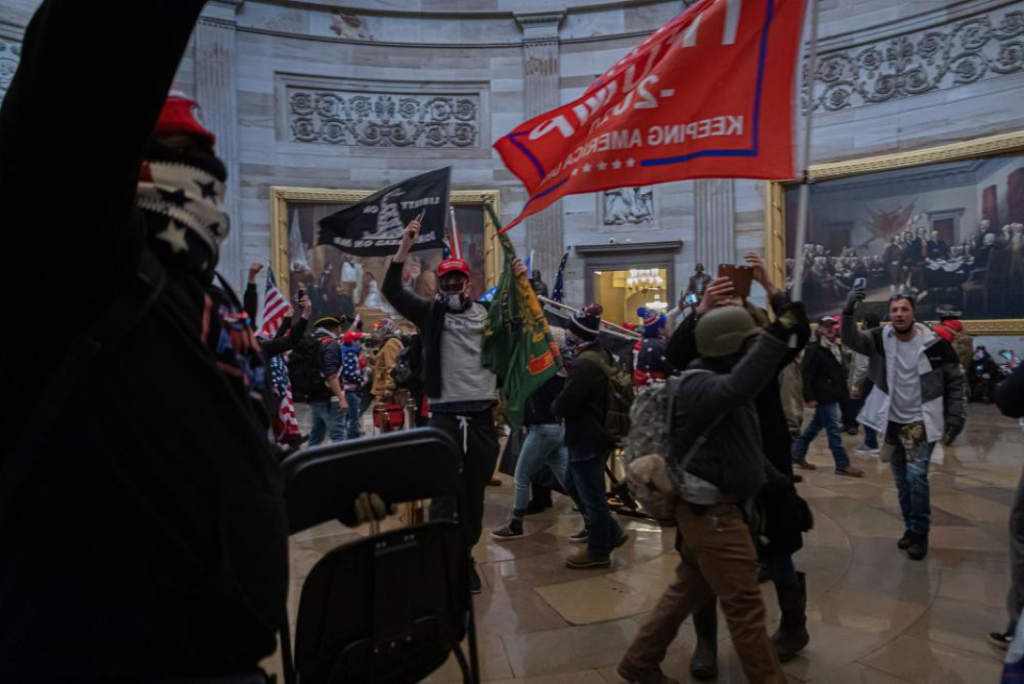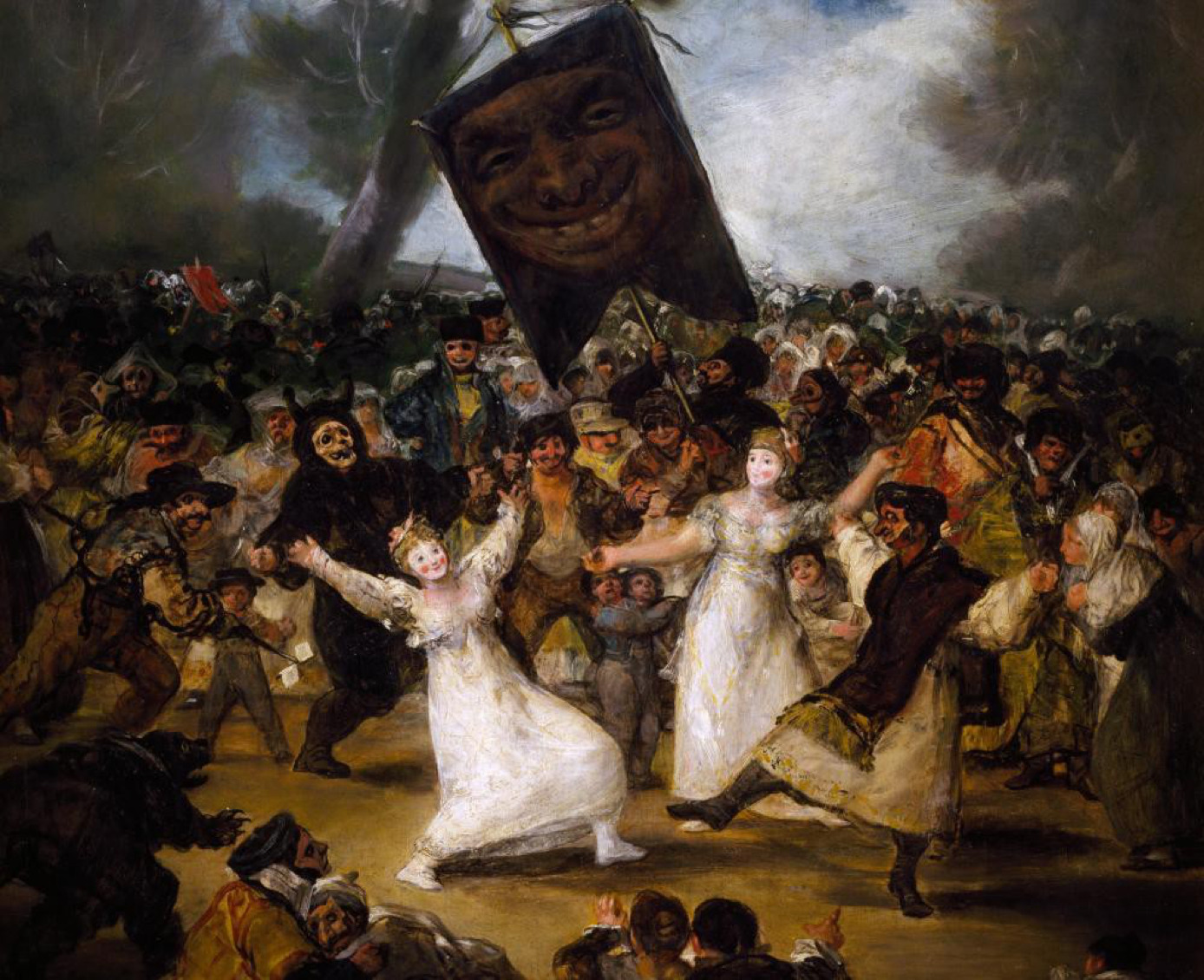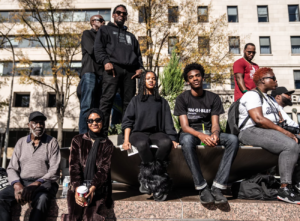The horrific visions of the Spanish painter are about to go on display at New York’s Met. Americans should flock to this timely show – because no artist better captured collective delusion and mass fanaticism
The macabre art of Francisco Goya, the first truly modern artist, is due to be exhibited at the Metropolitan Museum in New York next month and there could hardly be a more urgent moment for Americans to look at his images. For, over 200 years ago, this Spanish artist perfectly captured the kind of collective delusion and mass fanaticism that swarmed the US Capitol last week. The mob of Trump supporters who assaulted the home of American democracy were as inflamed as the crowd who march with crazed eyes behind a manic musician in The Pilgrimage to San Isidoro, as dangerous as the hate-drunk crowd in The Second of May 1808, spellbound by their goat-headed charismatic idol.
And then there’s The Burial of the Sardine, in which a delirious crowd cavort around a huge banner of a madly grinning face. At first glance, it seems to be a joyous carnival scene, but look closer and the intensity of their rite becomes unsettling as you notice that face on the banner, their vacant lord of the dance. It has a definitive Trumpian air.
Goya would instantly recognise the tumult America finds itself in, one in which Trump repeatedly claims to have won an election he lost, with large numbers of people believing him without a scrap of evidence. There is nothing new, or particularly American, about fervent irrationalism beating reasoned thinking. He’d have fun portraying the crowds, in Britain as well as in America, who gather without masks to protest against lockdown and deny Covid-19 exists. After all, how different are they from the massed bigots he depicted in his paintings of the Spanish Inquisition, approving the torture of rationalists and scientists.

Goya even gave a name to our current plight, in a print of a man resting his head on a desk as if giving up on trying to understand the world. All around his despairing form, strange monsters of the night materialise with the shining cold eyes of owls and cats. On the side of his desk is an inscription that translates as: “The Sleep of Reason Produces Monsters.”
Goya witnessed reason’s rise and fall. He was born in 1746, in the century of the Enlightenment and the rise of science. It seemed possible that politics and society could be remade on a rational basis. Goya’s early paintings, most joyously his brightly coloured tapestry cartoons full of smiling picnicking modern people, glow with Enlightenment optimism. But in the early 1790s, an illness left him completely deaf, which seems to have changed how he saw the world.

One of the prints in his 1799 series Los Caprichos shows two men with padlocks over their ears, one being spoonfed as he sleepwalks. It is an image of closed minds that may also be trying to evoke his isolation in a silent world. Indeed, the enigmatic, unexplained strangeness of the Caprichos makes us all feel like we’re trying to interpret a drama with words we can’t fathom.
In 1808, Napoleon invaded Spain, unleashing the hell Goya depicts in his graphic series The Disasters of War
But it was not only Goya’s hearing loss that darkened his art. It was history. The French Revolution in 1789 was the consummation of the Enlightenment, sweeping away ancient, absurd inequalities. Yet it became the very opposite of rational as the guillotine got going. Goya’s painting of Saturn eating one of his children is a vision of the Revolution’s violence as it consumed its own creators. Napoleon took power supposedly to end the chaos. In 1808, he invaded Spain, unleashing the hell Goya depicts in his graphic series The Disasters of War.
Yet there was another model of Enlightened revolution in Goya’s day. When Britain’s American colonists rebelled in 1765, their leaders included the world-famous scientist Benjamin Franklin, as well as politicians steeped in the new language of human rights. Compared with Goya’s Spain, where archaic religious persecution and savage fanaticism strangled the Enlightenment, the US with its promotion of “Life, Liberty and the pursuit of Happiness” was a transatlantic utopia. It would take time for its terrible blindspot, slavery, to undermine that hope.

The great neoclassical monuments of Washington DC were begun in Goya’s lifetime and continued through the 1800s. Their harmonious design sang the beauty of reason at the very moment the artist witnessed it fail in Spain. The Capitol building was started in 1793 as part of Pierre Charles L’Enfant’s grand plan for a spacious, calm, yet sublime monumental Washington whose classical geometries express an unshakable belief in rational republican optimism. Goya returned to Madrid that same year after losing his hearing and hope for humanity.
L’Enfant’s confidence and optimism now seem to have vanished. Goya’s dark pessimism has far more pertinence to the last days of Trump’s tenure. The invasion of the Capitol brought the Spaniard’s horrific vision to Washington, as the logical architecture of the Capitol clashed with the chaos that filled it. Neoclassicism meets Goya, reason is overrun by madness, and lawlessness threatens to swallow the republic.




